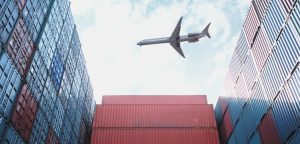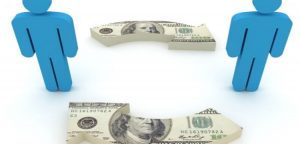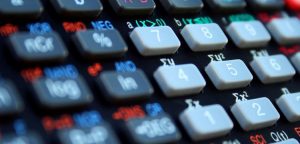
The Institute is proud to be the Strategic Partner of the World Customs Organization (WCO) Academy in the UK. This landmark relationship will enable UK trade professionals to gain internationally recognised skills and expertise relating to customs procedures from the world’s leading customs institution.
Established in 1952, the WCO represents 183 Customs administrations across the globe that collectively process approximately 98% of world trade. As the global centre of Customs expertise, the WCO is the only international organisation with competence in Customs matters and can rightly call itself the voice of the international Customs community.
The WCO has developed 23 Customs-focused e-learning courses covering more than 500 hours of e-training on major international instruments, topics and concepts that contribute to enhancing the work of Customs officers from across the globe, directly at their work place. It is now making e-learning solutions available to private sector professionals, which have been suitably adjusted to meet their needs.

Rules of Origin
This online course offers an overview of Rules Of Origin in general and a better implementation and application of the origin procedures, priority been given to practical topics that would help international trade professionals understand and apply the regulations contained in the Free Trade Agreements or GSPs in application.

WTO Trade Facilitation Agreement (TFA)
The Trade Facilitation Agreement (TFA) is the product of almost 10 years of World Trade Organization (WTO) negotiations. It will be legally binding once two-thirds of the World Trade Organization Members accept it, on those Members that accept it.
Driven by the spectacular growth in global trade, and the urgency to reduce the time and cost of moving goods across borders, the TFA contains provisions for speeding up the movement, release and clearance of goods. It sets out best practice for cooperation between Customs and other stakeholders, and it contains provisions for technical assistance and support for nations who may need it.
It should take about 5 hours to complete this course.

Transfer Pricing
This course comprises of 4 sections covering an Introduction to Transfer Pricing, OECD Transfer Pricing Guidelines, Transfer Pricing Methods and Customs Valuation and Transfer Pricing: a Comparison.

Harmonized System - Art and Jewelry
The HS is used by more than 200 countries and economies as the basis of their national tariff and statistical nomenclatures. Over 98 % of the merchandise in international trade is classified in terms of the HS. It comprises about 5,000 commodity groups; each identified by a six-digit code, arranged in a legal and logical structure and is supported by well-defined rules to achieve uniform classification. It entered into force on 1 January 1988. The Harmonized System is also periodically updated and it is now the 6th edition, the 2017 version that is implemented.

Harmonized System - Industry & Construction
The HS is used by more than 200 countries and economies as the basis of their national tariff and statistical nomenclatures. Over 98 % of the merchandise in international trade is classified in terms of the HS. It comprises about 5,000 commodity groups; each identified by a six-digit code, arranged in a legal and logical structure and is supported by well-defined rules to achieve uniform classification. It entered into force on 1 January 1988. The Harmonized System is also periodically updated and it is now the 6th edition, the 2017 version that is implemented.

Harmonized System - Textiles
The HS is used by more than 200 countries and economies as the basis of their national tariff and statistical nomenclatures. Over 98 % of the merchandise in international trade is classified in terms of the HS. It comprises about 5,000 commodity groups; each identified by a six-digit code, arranged in a legal and logical structure and is supported by well-defined rules to achieve uniform classification. It entered into force on 1 January 1988. The Harmonized System is also periodically updated and it is now the 6th edition, the 2017 version that is implemented.

Harmonized System - Chemicals
The HS is used by more than 200 countries and economies as the basis of their national tariff and statistical nomenclatures. Over 98 % of the merchandise in international trade is classified in terms of the HS. It comprises about 5,000 commodity groups; each identified by a six-digit code, arranged in a legal and logical structure and is supported by well-defined rules to achieve uniform classification. It entered into force on 1 January 1988. The Harmonized System is also periodically updated and it is now the 6th edition, the 2017 version that is implemented.

Harmonized System - Agriculture & Agrifood
The HS is used by more than 200 countries and economies as the basis of their national tariff and statistical nomenclatures. Over 98 % of the merchandise in international trade is classified in terms of the HS. It comprises about 5,000 commodity groups; each identified by a six-digit code, arranged in a legal and logical structure and is supported by well-defined rules to achieve uniform classification. It entered into force on 1 January 1988. The Harmonized System is also periodically updated and it is now the 6th edition, the 2017 version that is implemented.

Customs Valuation - Course 2 - Advanced valuation methods
Customs value constitutes the basis for the assessment of Customs duties and taxes. A lack of knowledge often results in the submission of declarations with incorrect Customs values because all the elements necessary for their determination were not taken into consideration. When such incorrect declarations are identified during Customs valuation control process, adjustments are made to the declared value with an additional assessment of duties and taxes and sometimes penalties.

Customs Valuation - Course 1 - Valuation concepts and transaction value
Customs value constitutes the basis for the assessment of Customs duties and taxes. A lack of knowledge often results in the submission of declarations with incorrect Customs values because all the elements necessary for their determination were not taken into consideration. When such incorrect declarations are identified during Customs valuation control process, adjustments are made to the declared value with an additional assessment of duties and taxes and sometimes penalties.

Temporary Admission - The Istanbul Convention
Some goods which need to be brought into a country for certain specific reasons (an exhibition, commercial demonstration, humanitarian mission, etc.) are exempt from Customs duties under the express condition that they are re-exported within a specified timeframe. This is what is known as the temporary admission procedure. The Convention on Temporary Admission signed in Istanbul on 26 June 1990 provided a means of bringing together, and simplifying, various instruments governing temporary admission which were already in existence at that time. The most important tools covered by the Istanbul Convention are the ATA carnet (for goods) and the CPD carnet (for vehicles), which are standardized documents used by Customs services to check temporary admissions. Nevertheless, many problems have been encountered with the application of the Convention in the field, and with the use of the carnets in certain specific circumstances. The training is therefore focused on the very practical issue of the use of ATA and CPD carnets, with lessons dealing in detail with the documents themselves and how they are used in different situations.

Single Window – Course 1 - Practitioners
Welcome to this course aimed at enhancing knowledge about the Single Window Environment. The course is based on the WCO Single Window Compendium. Volume 1 will give practical guidelines for implementation to the practicioners. While Volume 2 is intended to give a theoretical view of the Single Window environment to decision-makers This course has been developed with financial support from the WCO-HMRC-UNCTAD Project.

WCO Data Model - Course 2 - Practitioners
The users of the WCO Data Model should work closely to supply commonly used technical information to each other for mutual advantage. Interested parties could come together to solve business and technical challenges through the adoption of the Data Model, and thereby take advantage of technological advancements to further speed-up the deployment of IT solutions.

WCO Data Model - Course 1 - Managers
The WCO Data Model is a maximum set of carefully combined and harmonized data requirements derived from cross-border regulation. These requirements are mutually supportive and updated on a regular basis to meet the procedural and legal needs of cross-border regulatory agencies such as customs, controlling export, import and transit transactions.
